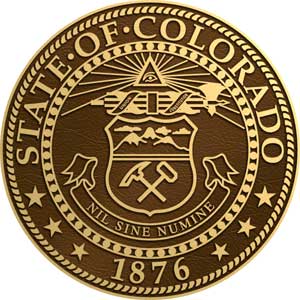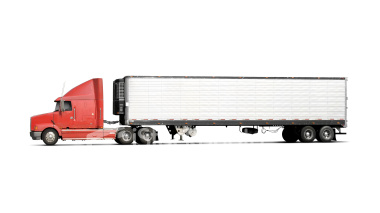Obtaining a CDL
A Commercial Driver’s License (CDL) is required in the United States to operate any type of vehicle which has a gross vehicle weight rating (GVWR) of 26,001 lb (11,793 kg) or more for commercial use, or transports quantities of hazardous materials that require warning placards under Department of Transportation regulations, or that is designed to transport 16 or more passengers, including the driver. This includes (but is not limited to) tow trucks, tractor trailers, and buses. Before applying for a Colorado commercial instruction permit, you must first hold a valid Colorado Driver’s License. The CDL permit is required before the CDL driving skills test may be administered. When both the written and road tests are completed, a CDL can be issued.
Testing is in your vehicle and the cost is $275.00. Skill’s Test Preview’s and Refresher Programs are also available.
- Step #1 – Get Your Permit
- Step #2 – Schedule Appt.
- Step #3 – Pre-Trip Inspection
- Step #4 – Basic Vehicle Control
- Tab Step #5 – On-Road Driving
To get started, you’ll first need to obtain a CDL Permit at your local Bureau of Motor Vehicles. To receive your CDL, here’s what your’ll need:
- Two forms of ID and proof of lawful presence in the US

- Proof of current Colorado residential address (utility bill, bank statement, etc)
- Be at least 18 years of age
- Proof of your Social Security Number
- Current DOT medical examination
- Pass the required CDL knowledge tests
- Pay the $16.80 fee
Once you pass the required written test(s) and are issued an instruction permit, you then can schedule and take the CDL driving skills tests (Step #3, 4, 5).
CDL Testing in Colorado is no longer done at the Driver’s License branches. The CDL Skills Test is now administered through third-party testing centers, such as Colorado CDL Testing which are licensed by the State of Colorado CDL Compliance to provide third party Colorado CDL testing.
Now that you have your permit, you’ll want to schedule an appointment with a licensed testing center to complete Step #3, 4, & 5. To schedule an appointment with Colorado CDL Testing, please complete the form below.

In order to obtain a CDL you will be required to pass a pre-trip vehicle inspection test. You will be tested to see if you know whether your vehicle is safe to drive. You will be asked to do a pre-trip vehicle inspection and explain to the tester what you would inspect and how you know an item is in good, safe working order. The following seven-step inspection method should be useful. Download CDL Driver’s Handbook

- Vehicle Overview – Approach / Secure Vehicle
- Do Walk-Around Inspection
- Check Engine Compartment
- Coupling / Combination Vehicle
- Complete Exterior Light Check
- In-Cab Inspection / Safe Start
- Check Braking System
Helpful Notes: As a professional driver, you have a moral and legal duty to yourself and other motorists to conduct a thorough pre-trip inspection of your vehicle. It takes practice to perform a quality pre-trip inspection… do a vehicle inspection the same way each time. A systematic means to your inspection is the secret to an efficient and accurate inspection without the chance of overlooking key system parts.

Did You Know?
State and federal laws in the USA require that you – the professional driver – conduct a thorough inspection each time you drive your CMV. As a driver, you must have in your possession a valid inspection report. The three vehicle inspections are as follows:
- The Pre-Trip Inspection FMCSR 396.13
- The En-Route Inspection 392.2
- The Post-Trip Inspection 396.11
- Federal Motor Carrier Safety Regulation 396
– Required by law, each truck should have a properly rated fire extinguisher and three red reflective triangles.
– In trucks with electronically-controlled engines, the needles on all gauges will make a full sweep after ignition. This self check function ensures that all guages are working properly.
—-
As of 2010, according to the American Transportation Research Institute, 29 states have instituted anti-idling laws requiring big-rig truck and bus operators to reduce nonessential idling.
—-
Helpful Hints: Each time you stop to inspect your vehicle en-route, check the following:
- Tires
- Brakes
- Cargo
- Coupling Devices
- Lights
Click Here For Potential Test Questions
- What is the most important reason for doing a vehicle inspection?
- What things should you check during a trip?
- Name some key steering system parts.
- Name some suspension system defects.
- What three kinds of emergency equipment must you have?
- What is the minimum tread depth for front tires? For other tires?
- Name some things you should check on the front of your vehicle during the walk around in-spection.
- What should wheel bearing seals be checked for?
- How many red reflective triangles should you carry?
- Why put the starter switch key in your pocket during the pre-trip inspection?
- Forward stop, straight line backing
- Offset back right
- Parallel park conventional (passenger side)
- Parallel park driver’s side (site side)
- Alley dock
You will be scored on the number of times you touch or cross over an exercise boundary line (marked by cones and painted lines) with any portion of your vehicle. Each encroachment will count as an error. You will be given the opportunity to exit the vehicle once per maneuver to check for vehicle positioning. However, and excessive number of pull-ups, looks, or encroachments will result in an automatic failure of the basic skills test.
It’s important that you finish each exercise exactly as the tester has instructed you. If you don’t maneuver the vehicle into its final position, you will be penalized.
Did You Know?
Getting a feel for basic control and practicing these skills is the next step towards becoming a professional driver… professional drivers continue to master and polish driving skills.
—-
Helpful Hints: The key to backing your rig in a straight-line is to recognize what direction the trailer is drifting and make neccessary adjustments immediately. *Survey BOTH outside mirrors.
More Information
- PTDI – Exercise basic control, www.ptdi.org/standards
- You must demonstrate properly double-clutching on all conventional transmissions while on your road test.
- Jake Brake – The jake brake is a compression release engine brake. The use of a jake brake is not allowed during a road test…
—-
General Baking Rules
- Start in the proper position
- Back slowly
- Avoid distractions
- Constantly check behind your vehicle
- Start over when necessary
Helpful Hints: In all your backing maneuvers, PROPER SET-UP IS KEY… proper set-up positioning is everything.
—-
NOTE: The driver is responsible for…
- Legal gross weight
- Overall length and amount of weight per axle
- Rig’s maneuverability to turn safely
- Knowing ALL state and local laws / restrictions
—-
Bridge Formula Weights
For information on the Federal Highway Safety Administration (FHSA) bridge formula weights calculator, please visit http://en.wikipedia.org/wiki/Federal_Bridge_Gross_Weight_Formula
Click Here For Potential Test Questions
- Why should you back toward the driver’s side?

- If stopped on a hill, how can you start moving without rolling back?
- When backing, why is it important to use a helper?
- What’s the most important hand signal that you and the helper should agree on?
- What are the two special conditions where you should downshift?
- When should you downshift automatic trans-missions?
- Retarders keep you from skidding when the road is slippery. True or False?
- What are the two ways to know when to shift?
For the road test the driver will drive a predetermined route. The Colorado scoring system is based on determining the driver’s unsafe driving behavior. There is no minimum or maximum length or time for a road route. (Approx. 45min.)
The On-Road Driving section is the final step in acquiring your Commercial Driver’s License. Below are some of the behaviors that will be observed:
 Lane changes – left to right/right to left
Lane changes – left to right/right to left- Turns – left/right
- Intersections
- Expressway
- Urban/Rural/Highway
- General Driving Behavior
- Roadside Stop/Start
- Observing Signs
- Taking Curves
- Railroad/Highway Crossings
- Download CDL Driver’s Handbook For More…
*Automatic Failures*
- Not using safety belt
- Failing to avoid a crash or incident
- Moving violations
- Disobeying signs and signals
- Dangerous Acts
- Putting vehicle over sidewalks and curbs unnecessarily
Click Here For Potential Test Questions
- How far ahead does the handbook say you should look?
- What are two main things to look for ahead?
- What is your most important way to see the sides and rear of your vehicle?
- What does “communicating” mean in safe driving?
- Where should your triangles be placed when stopped on a divided highway?
- What three things add up to total stopping distance?
- If you go twice as fast, will your stopping distance increase by two or four times?
- Empty trucks have the best braking. True or False?
- What is hydroplaning?
- What is “black ice”?
- How do you find out how many seconds of fol-lowing distance space you have?
- If you are driving a 30-foot vehicle at 55 MPH, how many seconds of following distance should you allow?
- You should decrease your following distance if somebody is following you too closely. True or False?
- If you swing wide to the left before turning right, another driver may try to pass you on the right. True or False?
- What is a hazard?
- Why make emergency plans when you see a hazard?
- What are some tips to follow so you will not become a distracted driver?
- How do you use in-vehicle communications equipment cautiously?
- How do you recognize a distracted driver?
- What is the difference between aggressive driving and road rage?
- What should you do when confronted with an aggressive driver?
- What are some things you can do to reduce your stress before and while you drive?
- You should use low beams whenever you can. True or False?
- What should you do before you drive if you are drowsy?
- What effects can wet brakes cause? How can you avoid these problems?
- You should let air out of hot tires so the pressure goes back to normal. True or False?
- You can safely remove the radiator cap as long as the engine is not overheated. True or False?
- What factors determine your selection of a “safe” speed when going down a long, steep downgrade?
- Why should you be in the proper gear before starting down a hill?Describe the proper braking technique when going down a long, steep downgrade.
- What type of vehicles can get stuck on a rail-road-highway crossing?
- How long does it take for a typical tractor-trailer unit to clear a double track?
We only Conduct CDL Skills Tests at our Colorado Springs, CO Location



